State the condition under which the terminal potential difference across a battery and its emf are equal.
To determine the condition under which the terminal potential difference across a battery (V) is equal to its electromotive force (EMF, E), we can analyze the behavior of the battery in different scenarios: charging and discharging.
1. Understanding EMF and Terminal Potential Difference:
- The EMF (E) of a battery is the maximum potential difference between its terminals when no current is flowing.
- The terminal potential difference (V) is the voltage measured across the terminals of the battery when it is connected in a circuit and current is flowing.
2. Charging Mode:
- In charging mode, the battery is connected to an external source that supplies current to it.
- The potential difference across the terminals can be expressed as:
V=E+I⋅r
where I is the current flowing into the battery and r is the internal resistance of the battery.
3. Discharging Mode:
- In discharging mode, the battery supplies current to an external circuit.
- The potential difference across the terminals can be expressed as:
V=E−I⋅r
where I is the current flowing out of the battery.
4. Condition for Equality:
- For the terminal potential difference (V) to equal the EMF (E), we need to consider both charging and discharging scenarios:
- In charging mode, V=E+I⋅r. For V=E, I must be 0 (no current flowing).
- In discharging mode, V=E−I⋅r. For V=E, I must also be 0 (no current flowing).
5. Conclusion:
- Therefore, the condition under which the terminal potential difference across a battery is equal to its EMF is when there is no current flowing through the battery. This occurs when the circuit is open (the key is open).
Final Answer:
The terminal potential difference (V) across a battery is equal to its EMF (E) when there is no current flowing in the circuit, which occurs when the circuit is open.
---
- The EMF (E) of a battery is the maximum potential difference between its terminals when no current is flowing.
- The terminal potential difference (V) is the voltage measured across the terminals of the battery when it is connected in a circuit and current is flowing.
- In charging mode, the battery is connected to an external source that supplies current to it.
- The potential difference across the terminals can be expressed as:
V=E+I⋅r
where I is the current flowing into the battery and r is the internal resistance of the battery.
- In discharging mode, the battery supplies current to an external circuit.
- The potential difference across the terminals can be expressed as:
V=E−I⋅r
where I is the current flowing out of the battery.
- For the terminal potential difference (V) to equal the EMF (E), we need to consider both charging and discharging scenarios:
- In charging mode, V=E+I⋅r. For V=E, I must be 0 (no current flowing).
- In discharging mode, V=E−I⋅r. For V=E, I must also be 0 (no current flowing).
- Therefore, the condition under which the terminal potential difference across a battery is equal to its EMF is when there is no current flowing through the battery. This occurs when the circuit is open (the key is open).
The terminal potential difference (V) across a battery is equal to its EMF (E) when there is no current flowing in the circuit, which occurs when the circuit is open.
Topper's Solved these Questions
- ELECTROSTATICS AND CURRENT ELECTRICITY BOOK - CBSE COMPLEMENTARY MATERIALCHAPTER - ELECTROSTATICS AND CURRENT ELECTRICITY EXERCISE - SHORT ANSWER QUESTIONS (2 MARKS)
59 Videos
- ELECTROSTATICS AND CURRENT ELECTRICITY BOOK - CBSE COMPLEMENTARY MATERIALCHAPTER - ELECTROSTATICS AND CURRENT ELECTRICITY EXERCISE - SHORT ANSWER QUESTIONS (3 MARKS )
23 Videos
- ELECTRONIC DEVICES BOOK - CBSE COMPLEMENTARY MATERIALCHAPTER - ELECTRONIC DEVICES EXERCISE - NUMERICALS
7 Videos
- SAMPLE QUESTION PAPER 2019BOOK - CBSE COMPLEMENTARY MATERIALCHAPTER - SAMPLE QUESTION PAPER 2019EXERCISE - Section C
19 Videos
Similar Questions
Knowledge Check
The terminal potential difference of a battery exceeds its emf. When it is connected
Ain parallel with a battery of higher emf.Bin series with a battery of lower higher emfCin series with a battery of lower lower emfDin parallel with a battery of lower emfThe terminal potential difference of a cell is greater than its emf when it is
Abeing dischargedBbeing chargedCin open circuitDshort circuitedThe terminal voltage across a battery of emf E can be
A0B>EC<EDall of above
(a) Find the potential difference between A and B
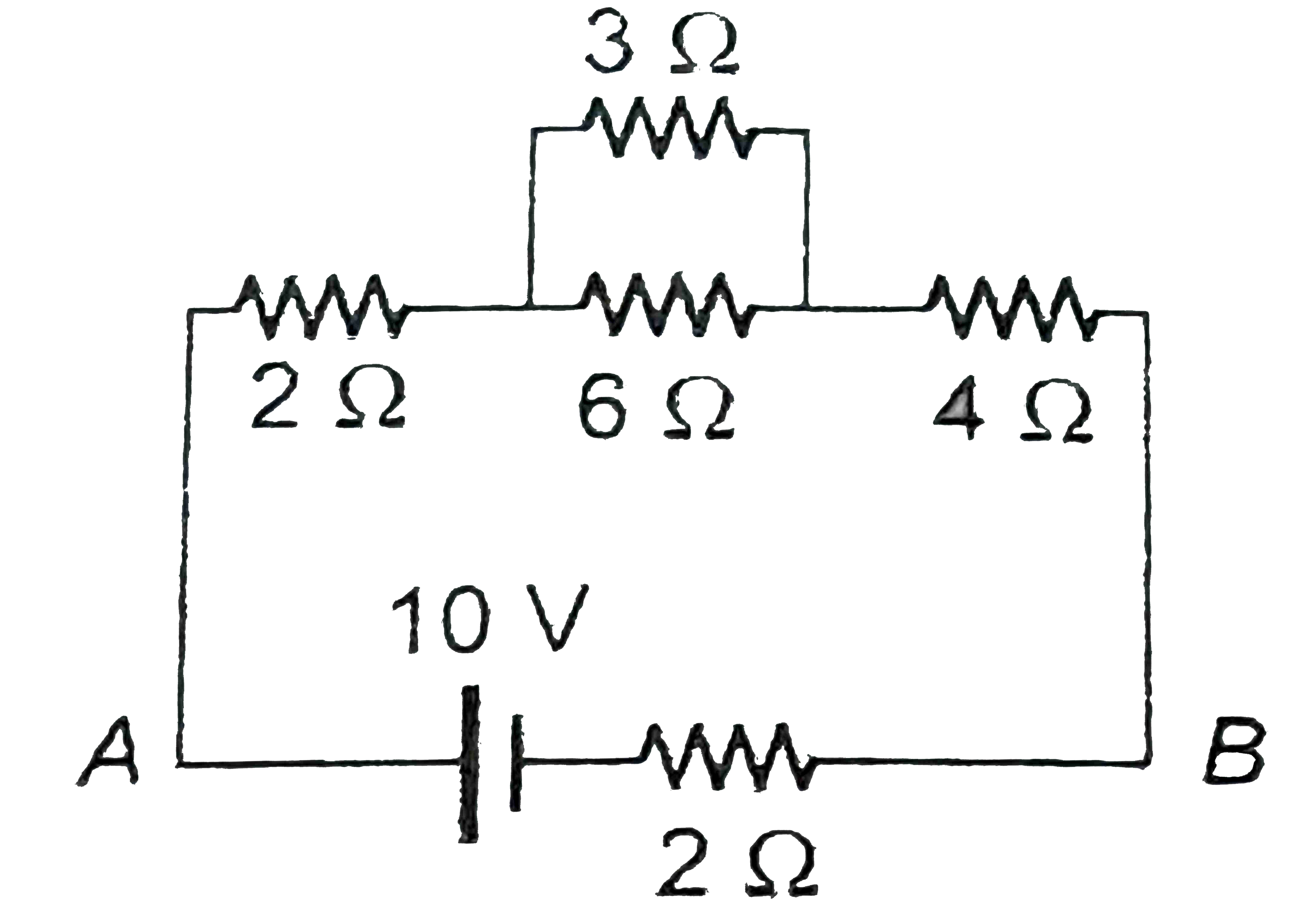
(b) Calculate the current flowing in the circuit and the potential difference across terminals of each cell.
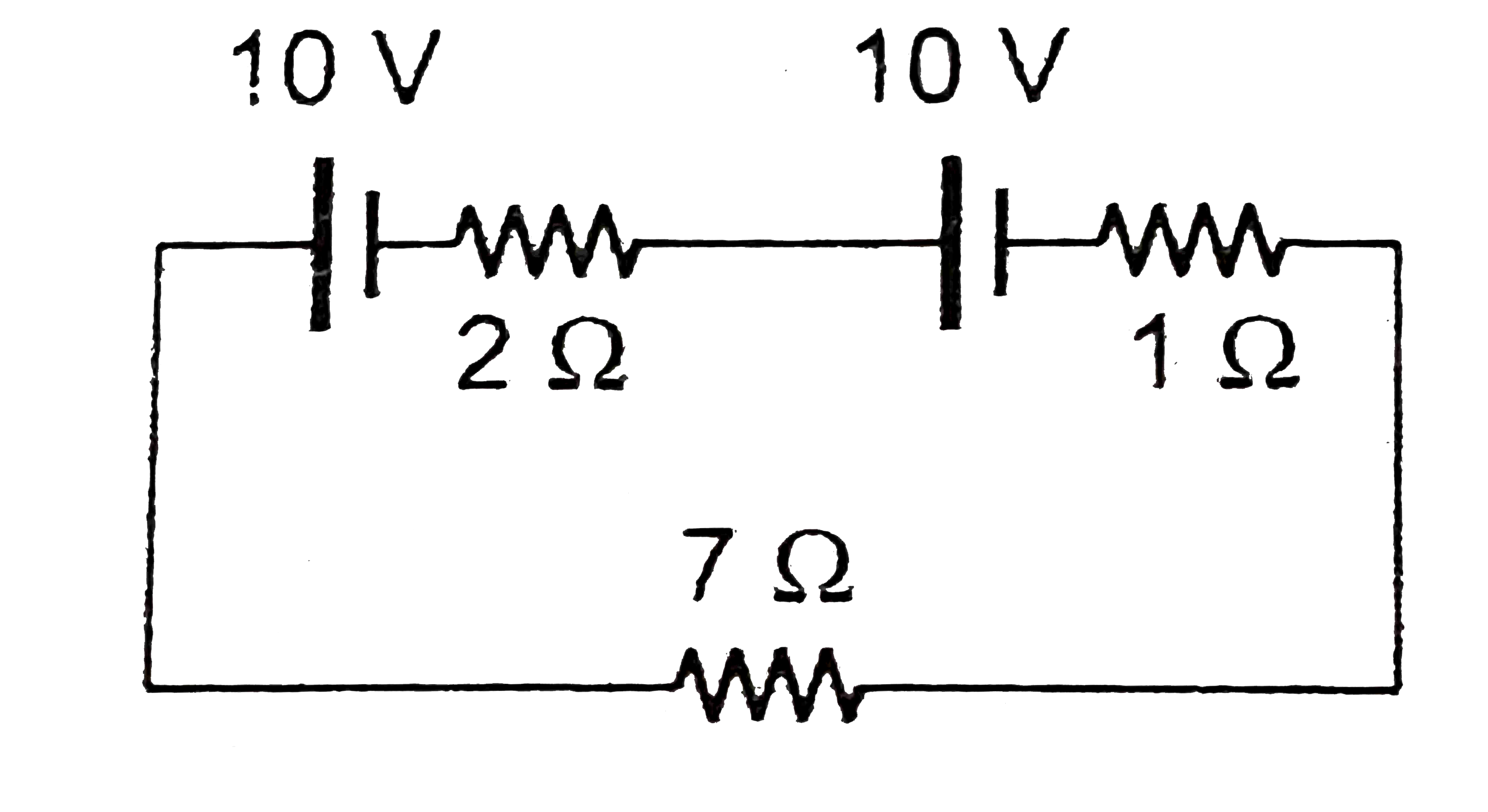
( c) Calculate the potential difference across terminals of each cell.
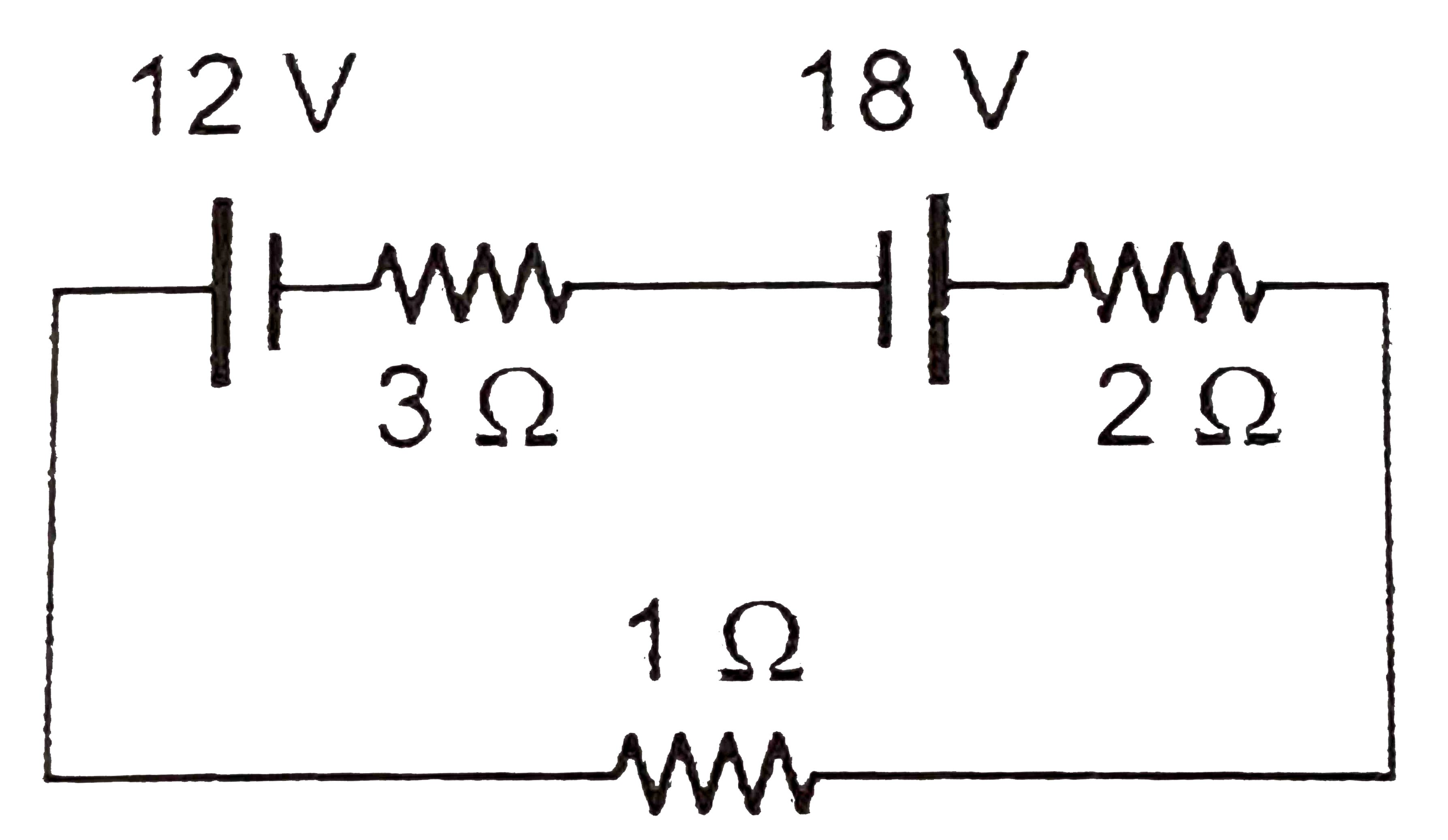
(d) Calculate the potential difference between A and B
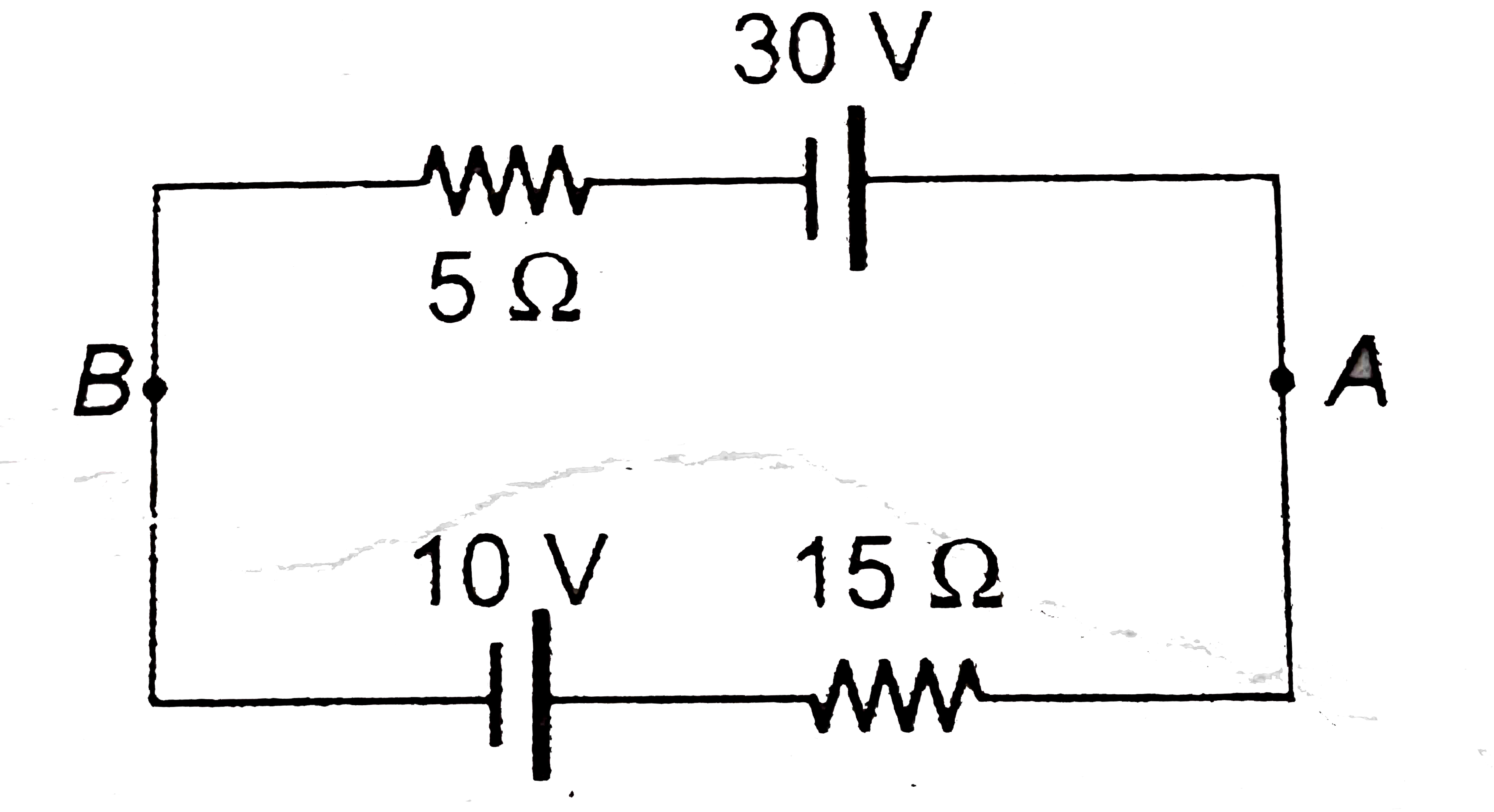
( e) Calculate the current in each resistor and terminal potential difference across each cell.

(f) Calculate potential difference across each cell.
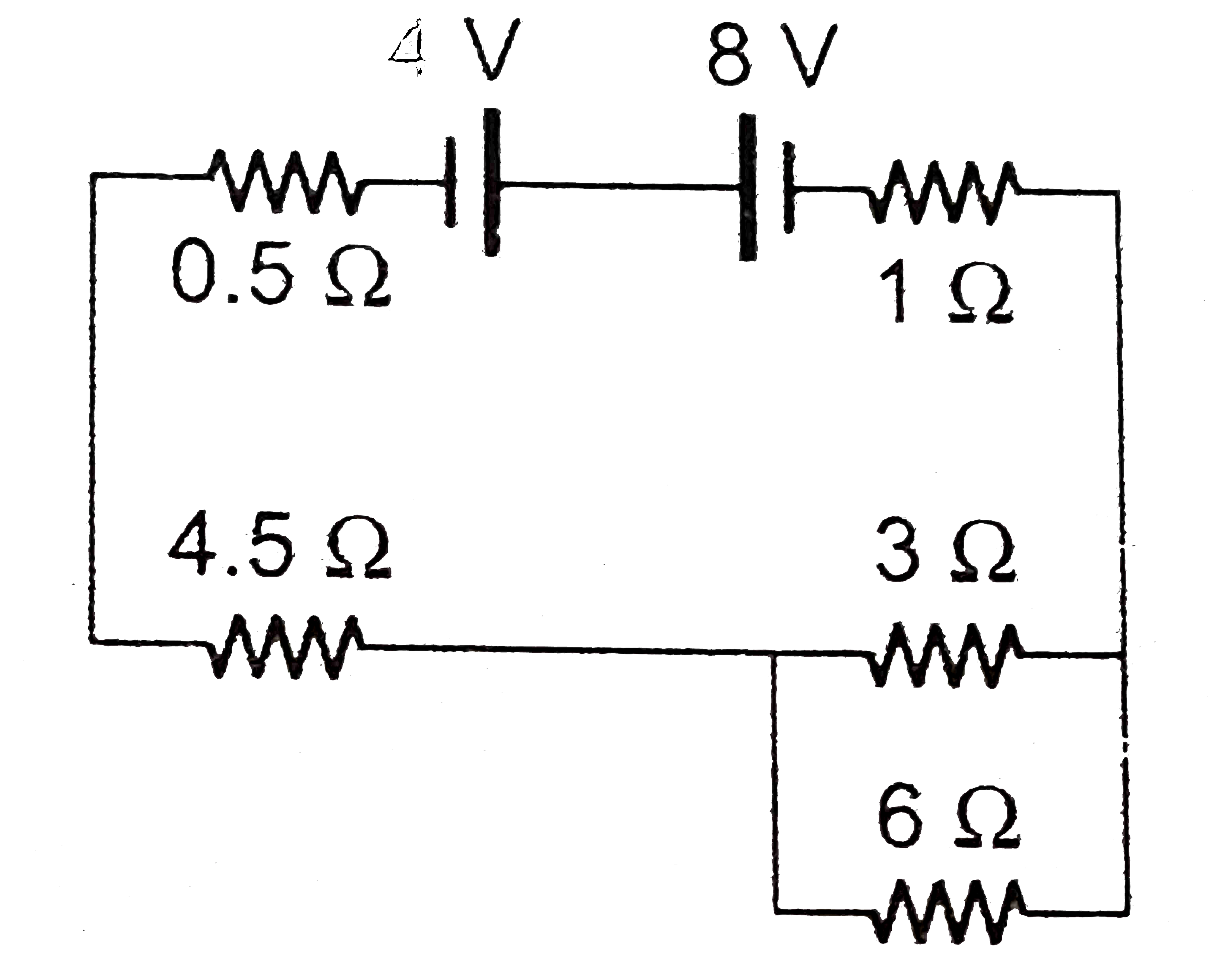
(g) A battery of 6 cells each of emf 2V and internal resistance 0.5Ω is being changed by DC mains of emf 220V by using an external resistance of 10Ω. Calculate.
(i) the charging current
(ii) the potential difference across the battery.
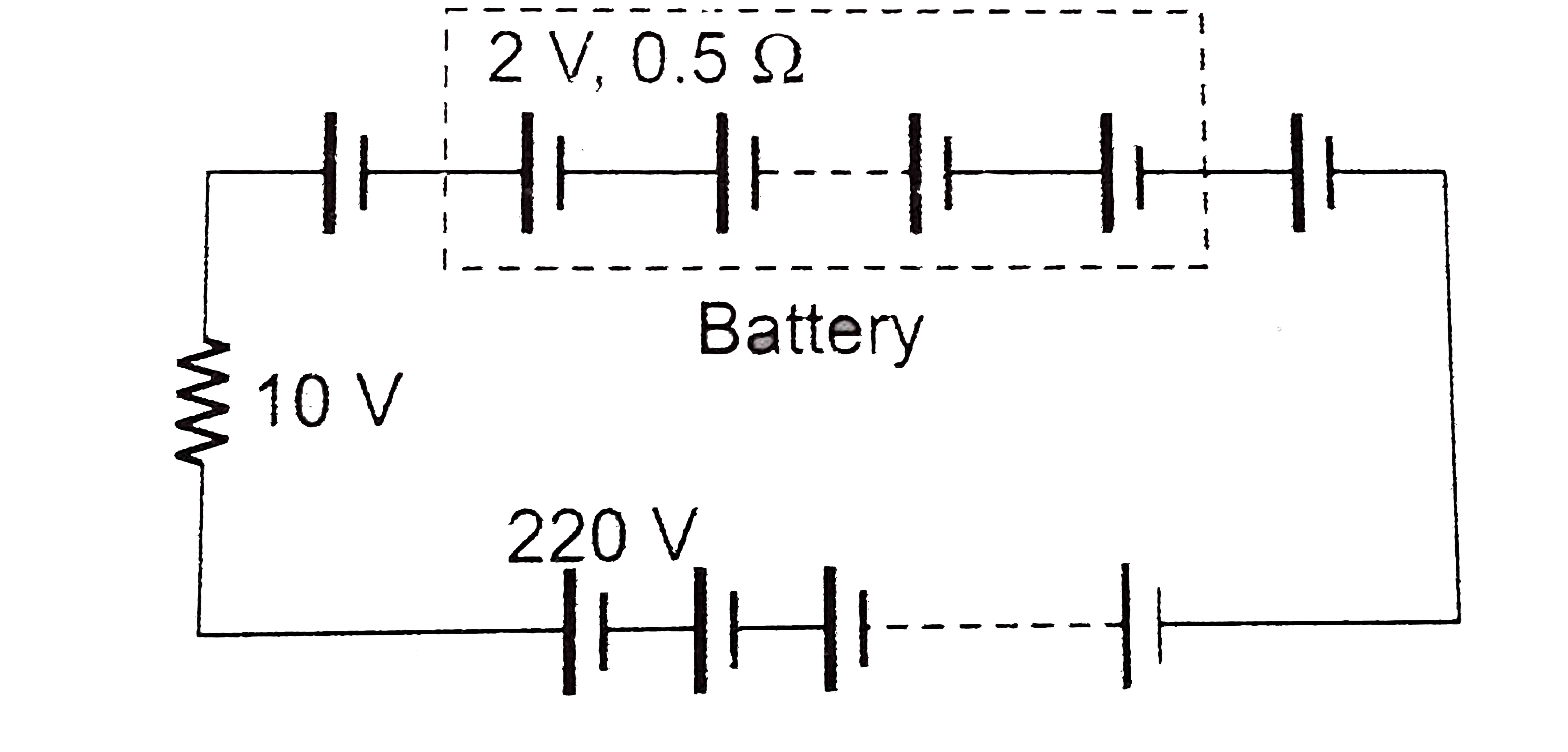 .
.
View SolutionIn the circuit shown the ammeter 'A' reads 2A. XY is a circuit which can either be a resistance of a battery. In the direction of the current there will always be a potential drop across the resistance. Reagarding battery you have to remember that the potential difference across its terminals can be more than its emf or less depending upon whether the battery is delivering the current, or is being charged in the circuit

Assuming XY to be a battery with 2Ω internal resistance which is being charged, its emf is:
View SolutionCell A has emf 2 E ad internal resistance 4 r. Cell B has emf E and internal resistance r. The negative of A is connected to the positive of B and a load resistance of R is connected across the battery formed. If the terminal potential difference across A is zero, then R is equal to
View SolutionWhat must be the current in a circuit if potential difference across a cell is equal to the emf of the cell.
View SolutionPotential difference across the terminal of a non ideal battery is
View Solution
